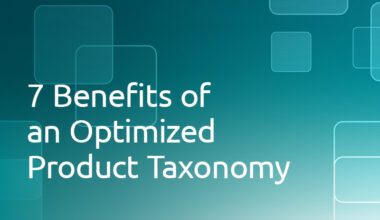Inventory management stands as one of the most crucial aspects of e-commerce and traditional retail business operations. At its core, inventory management is about ensuring that the right products are available at the right time and in the necessary quantities. Product classification is a tool that can make this process significantly more streamlined and efficient. But how? This article delves into the symbiotic relationship between product classification and inventory management efficiency.
Understanding Product Classification
Before we embark on the ‘how’, it’s essential to understand the ‘what’. Product classification refers to the process of categorizing products into specific groups based on shared characteristics. This could be based on product type, usage, price range, or any other distinguishable trait.
1. Facilitating Efficient Stocking
By classifying products effectively, retailers can understand which items are fast-moving and which ones have a slower turnover rate. This helps in:
- Prioritizing Restocks: Fast-moving items can be restocked more frequently.
- Optimizing Storage: Slower-moving items can be stored in less accessible areas, ensuring that fast-moving items are quickly retrievable.
2. Enhancing Demand Forecasting
Classification helps in identifying trends and patterns. For instance:
- Seasonal products can be predicted and stocked in anticipation of increased demand.
- Classification based on demographics or regional preferences can aid in understanding local demands better.
3. Reducing Holding Costs
Efficient product classification aids in:
- Better Space Utilization: Classifying products based on size and turnover rates ensures that warehouse space is used optimally.
- Reducing Overstocking: By understanding which products move slower, businesses can avoid over-purchasing, reducing the costs associated with holding excess inventory.
4. Improving Inventory Accuracy
With effective product classification:
- Cycle Counts Become Efficient: Regular stocktaking becomes more manageable when items are categorized effectively.
- Minimizing Mis-picks: When similar items are classified and stored distinctly, there’s less chance of shipping errors.
5. Enhancing Customer Satisfaction
Customers appreciate a smooth shopping experience:
- Faster Shipping: Well-classified inventories mean quicker picking and shipping processes.
- Reduced Out-of-Stock Instances: Efficient restocking based on product classifications ensures customers find what they want.
Product classification, when executed thoughtfully, can be the backbone of an efficient inventory management system. Not only does it aid in operational efficiency, but it also plays a pivotal role in enhancing customer satisfaction and loyalty. As the retail landscape continues to evolve, businesses that leverage such tools to optimize their processes will undoubtedly stay a step ahead in the competitive market.
If you’re looking for support with your product classification strategy to better serve your customers and streamline your business, contact our experts at geekspeak.
 1.416.619.5349 Ext.325
1.416.619.5349 Ext.325 







